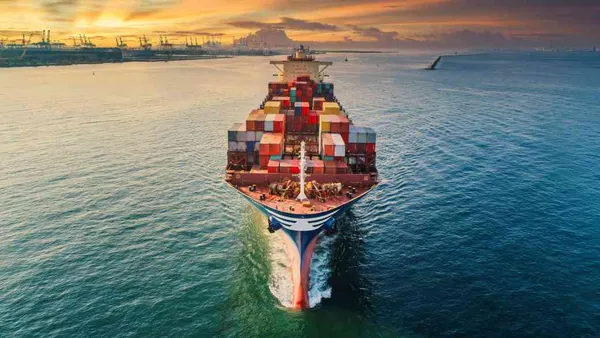As business leaders, we know that economic shocks are not new. From the 2008 financial crisis to the COVID-19 pandemic, we have navigated disruptions that tested our resilience. Nonetheless, the current landscape of tariffs presents a unique challenge.
The announcements on 2 April 2025 hiked the average US tariff rate from 2.5% to 27%. Tariffs ranging from 10% to 50% placed on all the US’s main trade partners, hit global markets, and prompted swift retaliation from China, the EU, Canada and elsewhere.
Tariffs have increased costs across many industries and throughout the entire supply chain. For CFOs, though, the impact goes beyond higher costs, with compliance regulations adding to the burden. While tariffs are not new, today's trade policies' speed, scale, and unpredictability are creating pressures that many finance leaders weren't prepared for.
This is a topic that comes up in nearly every conversation I have with customers. In our upcoming eBook, Impact of Tariffs on Finance, we will analyze how finance teams are responding to these challenges and turning them into opportunities.
The CFO’s Modern Dilemma
Unlike past economic shocks, when companies could eventually recalibrate forecasts, trade policies today are constantly shifting. Especially in publicly traded companies, it’s challenging for CFOs to provide forward-looking guidance. That sustained uncertainty creates more pressure than we have seen in past crises.
For many CFOs, the challenges are twofold: managing operational impacts today while setting the foundations for long-term resilience.
Internally, CFOs are under intense pressure to deliver accurate forecasts, manage liquidity, and control costs. Finance teams are expected to run sophisticated “what-if” scenario analyses across pricing, sourcing, and production strategies while managing competing priorities between departments.
Meanwhile, external pressures for CFOs include managing growing stakeholder expectations while navigating frequent regulatory changes. Investors, rating agencies, and financial institutions alike are closely watching profitability and liquidity. Loan covenants remain strict despite external shocks, forcing CFOs to preserve cash even when tariffs drive up costs.
The ripple effect is a growing strain on working capital. To safeguard against disruptions, many companies are stockpiling inventory, a move that locks up significant cash but creates a cascading challenge.
Furthermore, these dynamics aren’t just operational - they affect internal decision-making. Supply chain and manufacturing leaders want higher stock levels to secure supply, while treasury and finance leaders want to protect free cash flow. This can create healthy tension inside organisations that requires integrated, data-driven planning.
To navigate this, companies must recalibrate their working capital strategies, balancing short-term resilience against long-term financial health while operating in a volatile environment.
Turning Pressure into a Catalyst for Change
If there’s one unexpected outcome from tariff pressures, it’s the acceleration of AI adoption. Companies will need more advanced planning mechanisms to manage cost control, cash flow visibility, and strategic agility, and almost every company I speak to now has a generative AI agenda. It’s become a catalyst for productivity and smarter planning.
According to SAP's AI adoption in 2024 insights survey, only 32% of companies currently use AI in finance functions. This is a clear signal that planning and working capital management are ripe for transformation.
Our data, from the SAP Network, confirms the impact of tariffs on procurement costs. Comparing accelerated spend from 2024 to 2025, we can see that 18 companies operating in Consumer Goods, Information Technology, Energy, Communication Services, and Industrials have posted increases of more than 100%.
It is worth pointing out that while we believe the majority can be attributed to price increases and is directionally correct, the numbers also include volume increases.
These increases, however, do suggest that these sectors are absorbing the highest tariff-related costs or expanding procurement aggressively, possibly due to supply chain shifts, inflationary pressures, or strategic stockpiling.
Shifting trade patterns have already created a global realignment. McKinsey’s 2025 Global Trade update found that the average geopolitical distance of trade fell by 7% between 2017 and 2024, indicating that economies are trading more with politically aligned partners.
While all sectors have been affected, those heavily dependent on Asian supply chains have been hit the hardest. Industries tied to manufacturing, electronics, and imported materials face greater cost pressures and inventory risks than others.
Many of these companies had immature operational models and weaker technology infrastructure. As a result, they’re playing catch-up to an extent.
From my perspective in Stuttgart, Germany, the impact is real. We have a strong, export-heavy automotive industry, and tariffs are especially painful, leading to supply chain issues. As a direct consequence of these tariffs, both Porsche and Mercedes have announced layoffs recently.
But uncertainty extends far beyond one industry or one country. The effects are global because supply chains are global, and no sector is completely insulated.
A Blueprint for Action
To navigate volatility effectively, businesses should take a dual-track approach for short- and long-term strategies.
In the short-term:
- Enhance agility with data-driven strategies and real-time financial forecasting
- Adopt AI-powered scenario planning to respond rapidly to changing conditions
- Use working capital solutions to maintain liquidity during supply chain transitions
- Strengthen supplier relationships for priority access and pricing advantages.
In the long-term:
- Digitize core processes across finance, supply chain, and compliance
- Integrate planning across functions to ensure a single source of truth
- Maintain flexible financing tools to adapt as needed
- Upskill finance teams to focus on strategic analysis, scenario planning and digital tools.
The ability to plan for multiple scenarios, prepare for shocks, and maintain supplier liquidity is what will separate successful companies from the rest. Scenario planning requires a single unified data layer connecting finance, production and supply chains.
SAP’s Business Suite provides this foundation, enabling companies to run fully connected, end-to-end analyses across functions that break down silos and accelerate decision-making. When combined with SAP Taulia’s working capital solutions, businesses gain more flexibility and control.
CFOs need to be able to meet these challenges in the short term, while using the experience to help prepare for future challenges ahead. Our suite of working capital management solutions can help customers stay compliant, adaptable, and competitive in the midst of uncertainty.
Find out more about this in our upcoming eBook :Impact of Tariffs on Finance.










